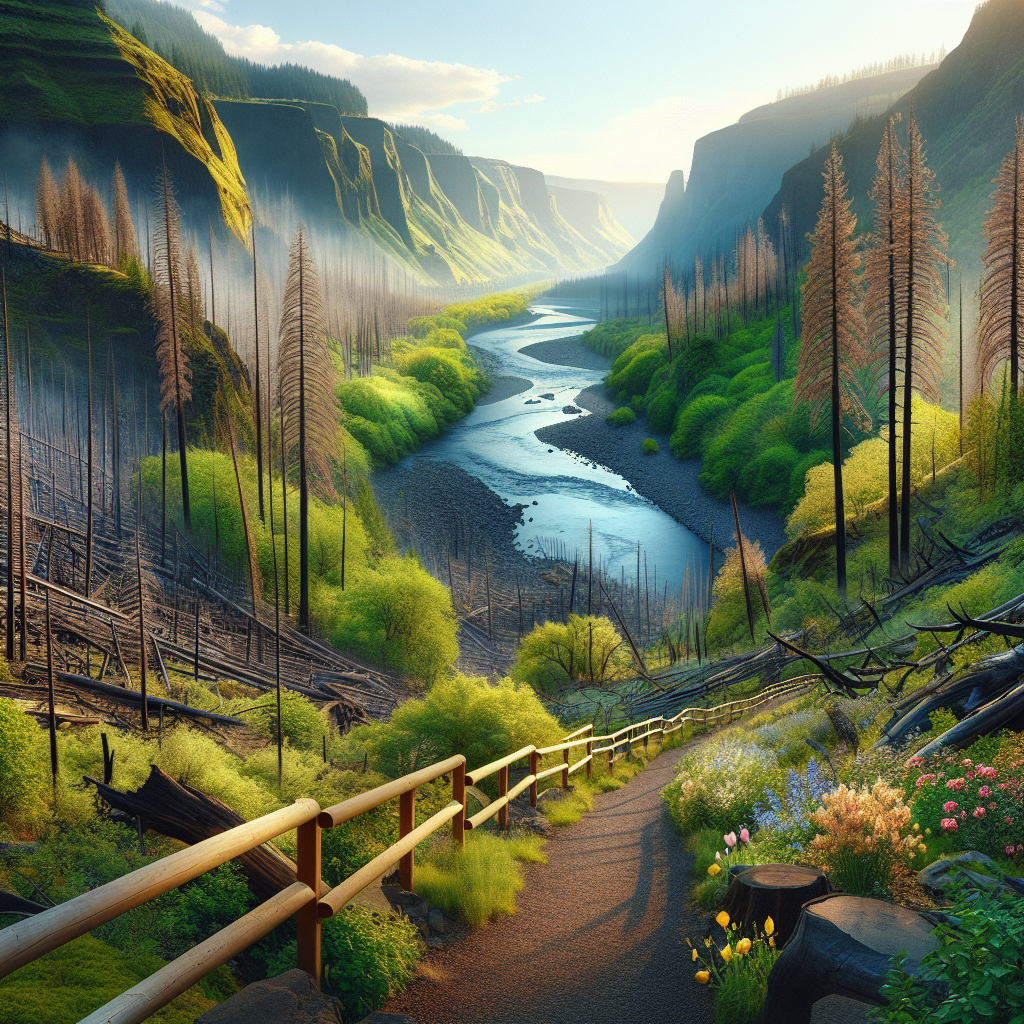Embarking on the Columbia River Gorge Trails Post-Recovery
Welcome to the ultimate guide to hiking in the Columbia River Gorge after the 2024 wildfire recovery. Now more than ever, Oregon’s beauty is ready for adventurers such as yourself to venture into its gorgeous landscapes and embrace nature’s resilience. Remember, the Eagle Creek Wildfire of 2017 and the 2024 wildfire have instilled in us Oregonians a new vigor to explore and cherish these trails.
Preparation is Paramount
First things first: gear up well before the hike. While Columbia River Gorge’s charm is enticing, it is equally vital to be prepared. Hiking boots that are broken in and comfortable are a must for the rocky and sometimes steep terrains. Consider our Oregon weather – it can be temperamental! Always carry waterproof wear, especially during spring or fall, and sun protection during the hot, dry months.
Many local stores like Columbia Sportswear and Next Adventure in Portland offer a wide range of quality hiking gear. Of course, don’t forget to pack ample water, high-energy snacks, and the iconic Oregon huckleberry treats!
Begin with the Basics

With the reopening of trails post wildfires, both well-trod paths and newbie hikes welcome you. Start with the easier ones like the Twin Tunnels trail near Hood River or the historic Columbia River Highway State Trail. For seasoned hikers, more strenuous trails like the newly reopened Eagle Creek or Wauna Viewpoint offer a challenge.
Caring for the Greens as They Heal
One crucial piece of advice from locals is to stay on trails. The Columbia River Gorge is on a healing path and needs our support. Off-trail hiking damages fresh plant growth and disrupts wildlife habitat. In short, ‘Leave No Trace’ is the mantra here. Let’s help preserve the natural regeneration of this magnificent area.
Navigating the Trails
Knowing when to hike is also part of the local wisdom. Weekend mornings in the Gorge – especially in Hood River or Multnomah Falls areas – can get crowded. For a quieter experience, consider going during weekdays or delving into the less-frequented eastern sections of the Gorge. The Klickitat Trail and the Labyrinth offer vast landscapes and incredible solitude.
Remember that Spring is wildflower season here. Tom McCall Preserve and Rowena Crest are particularly beautiful during this time, abloom with balsamroot and lupine. Fall, meanwhile, unveils a dramatic curtain of colors, and winter presents a stark yet stunning Gorge landscape.
Prepare for Wildlife Encounters
Another tip from the local knowledge pool is to be prepared for wildlife encounters. The Columbia River Gorge is home to a variety of species like black bears, bobcats, among others. Don’t feed them and certainly don’t attempt to get that ‘perfect selfie.’ Be respectful of their habitats.
Secure Your Hiking Permits
Oregon locals will nudge you to not overlook hiking permits. Many hikes in the Columbia River Gorge require a Northwest Forest Pass or a day-use fee. Trailheads with fees are usually marked with signage, but doing your research in advance will save you from potential hefty fines.
Safety Takes a Front Seat
Lastly, but most importantly, remember that safety is paramount. While exploring the post-recovery forests, watch out for loose rocks, dead standing trees, and other hazards that fires might have caused. Have a plan, know your trail, inform someone about your route, and always check weather and trail updates before you leave.
Happy Hiking from a friendly Oregon local
This comprehensive guide intends to prepare you for an enriching hike in the Columbia River Gorge, but ultimately, the real experience unfolds once you hit the trails. As an Oregon local, I assure you, every hike will be rewarding. Always, leave the trails with memories and in the condition that future generations can make their own. Happy hiking, friends!
